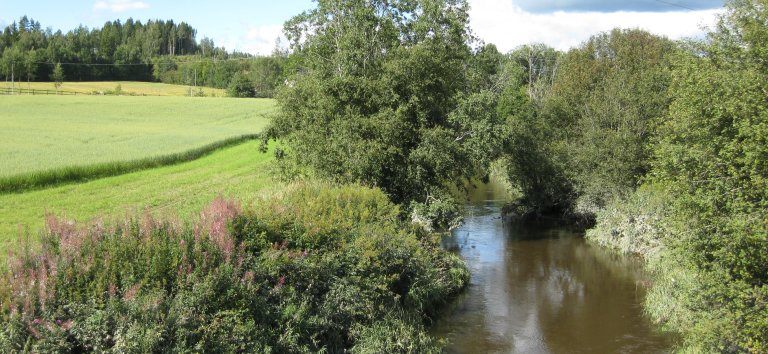
Measures on water quality
Here is a list and descriptions of the measures that can be implemented to achieve improved water quality in agricultural areas.
Measures against point sources
Point sources may include leakages from silos, manure storage, waste piles, barns, equipment washing facilities, farm buildings, etc. General advice on improvements are given in the Norwegian version of the guideline. Point source pollution needs to be assessed in an environmental plan that each farmer need to prepare for the farm. Failure to prepare such plans can lead to reduced subsidies. Furthermore, pollution from point sources are regulated by several different laws, which are referred to in the Norwegian version of this guideline.
Fertilizer planning
Fertilizer planning involves systematic quantification of the need for plant nutrients for the individual agricultural crop at each field of a farm. The fertilizer requirement is calculated based on a number of factors, primarily from the soil nutrient status and the crop's production potential for each location.
Conservation tillage
Conservation tillage involves minimum tillage before seeding, e.g. harrowing or direct seeding. It usually also involves no plowing in the autumn, in order to preserve stubble or plant cover during the autumn and winter. Conservation tillage will reduce the loss of soil and nutrients especially in steep fields, and can also be less time and energy intensive. However, the risk for fungi growth may increase.
Hydrotechnical measures
Control of surface runoff from agricultural land is important to minimize the loss of soil and nutrients. Hydrotechnical installations can regulate and control the runoff from agricultural areas. Maintenance of hydrotechnical installations, in particular the drainage systems/pipelines, is important. In Norway, many such installations were made in the 1970ies, and their condition may now be rather poor, with need of repair. Bioforsk has mapped the quality of hydrotechnical installations in some regions and found that in many cases the status is so poor that the installations may increase, rather than prevent, erosion.
Vegetated buffer zones
A vegetated buffer zone between the water body and farmland can act as an effective filter for soil particles, nutrients and particle-bound pesticides in surface runoff from agricultural land. Vegetation zones can also reinforce the stream and river banks and protect against landslides and excavation by the stream water.
Sedimentation ponds, constructed wetlands
Sedimentation ponds are constructed wetlands that retain soil particles, nutrients and pesticides from diffuse sources such as agricultural land, roads and urban areas. The ponds can also improve biodiversity and add an aesthetic quality to the cultural landscape.
Restoration of streams
In the agricultural landscape many streams have been led into subsurface drains, while other streams have been straightened out or regulated in other ways. Wetlands and ponds have been drained in order to cultivate the land. This can result in less biodiversity, pollution and increased flood peaks. In some locations it may be desirable to reverse this trend.
Grass-covered waterways
On erosion-prone soils where surface water is collected in natural depressions, erosion can be prevented by establishing grass-covered waterways. The waterways can either consist of permanent grass cover, or they can be sown every year.
Catch crops
Catch crops are here defined as crops sown to increase the uptake of nutrients and protect the soil against erosion and nutrient runoff after the main crop is harvested. Catch crops are sown either in spring (at approximately the same time as the main crop) or direct after harvesting of early crops. Basically, catch crops are used on grain areas to reduce the runoff of nitrogen, but synergies with several other ecosystem services are present. The use of catch crops may have positive effects on food production and water quality, reduced GHG emissions, carbon uptake, soil quality, reduced erosion, biodiversity and weed control.
Publications
Authors
Inga GreipslandAbstract
No abstract has been registered

